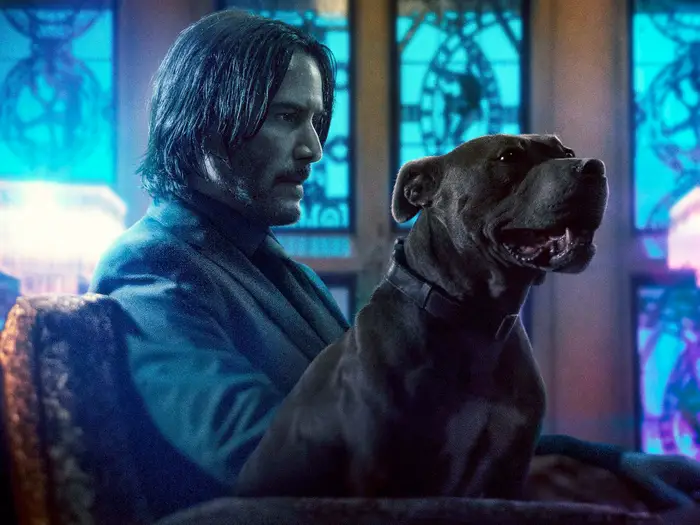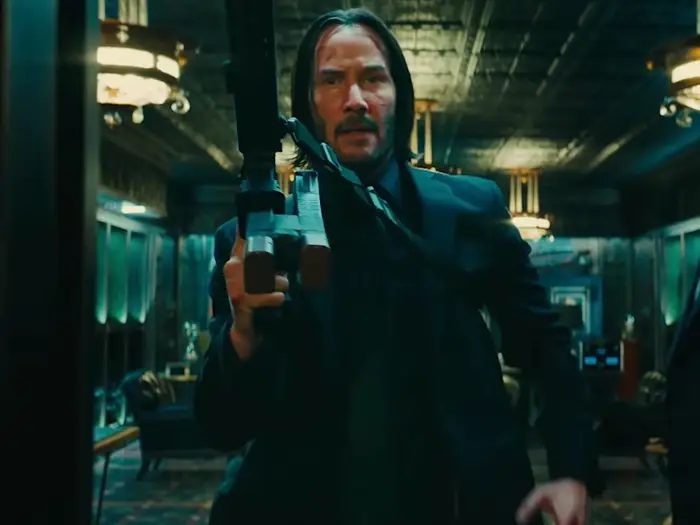How the John Wick Franchise Conquered and Redefined Action Cinema
John Wick’s action movies were a revision of the classic novel in 2010. They developed their style, as well as many large-budget Hollywood replicas.
It’s easy to forget the fact that John WICK was released with low expectations, similar to Liam Neeson’s debut film, Taken. The “retired assassin seeking revenge” concept was so well-known in 2014 that the inclusion of revenge for a dead dog was more like a parody than anything else. The trailers weren’t the most striking. Keanu Reeves wasn’t chosen, an actor who was, despite his popularity, still struggling with over a decade’s worth of disappointing films following the Matrix trilogy.
When word spread and word spread, everything changed. John Wick was 2014’s unexpected hit. The no-holds-barred action film included stylized gun-fu shootouts as well as an engrossing but bizarre underground assassin culture backdrop. It’s an excellent example of an action film. The film, released nearly nine years after, sparked three critically acclaimed sequels. The recently launched John Wick Chapter 4 brought back Reeves his career. It also put John Wick at the top of the action film iconography. The film’s most significant achievement was the systemic one: convincing Hollywood to imitate John Wick in every way.

RELATED: REVIEW – The Action-Packed John Wick Chapter 4 Lives Up to its sky-high expectations
John Wick Redefined Action Movies
Hollywood frequently undergoes “phases” that include action films. They mimic the basic idea and the choreography of a film to reclaim the spark that was in the bottle. This was the case for all the 1990s die-hard replicas. It was the time when early 2000s movies resorted to The Matrix’s bullet-time slow-motion effects as well as leather/latex clothing. The Bourne Trilogy sparked an entirely new generation of fight scenes that relied on disorienting shaky camera “realism.” This type of film was further emphasized by the film Taken’s surprising success, and led to the creation of numerous films where renowned older film stars would regularly punch an opponent with shortcuts (i.e. The Equalizer, Three Days to Kill, etc.).).
John Wick had a premise that reminded me of old movies that featured a widower who, after his son was a Russian mobster, robs his vehicle and kills the dog that he abandoned, returns to his former existence as “Baba Yag,” an unstoppable, vengeful hitman. Director Chad Stahelski, David Leitch, and their decades of professional stuntmen’s experience allowed them to make an action film that was full of action, but with few clear scenes. The viewers could watch every action, meaning they could watch an old man of 50 Reeves fight goons, and fight them back with endless punches. It had more resemblances to John Woo, Park Chan-wook, and even a hint of The Matrix rather than the typical Bourne fight scene. For American viewers, John Wick was a refreshing alternative for any other non-Marvel Cinematic Universe, Mission: Impossible, and Fast & Furious action film. The sequels only added to the excitement.
The worldbuilding of the film also changed. Every sequel to John Wick introduced new characters as well as a variety of details from the lore. The fact that it was extremely simple (i.e. there was no fighting on the Continental Hotel grounds or upholding the blood oath of a Marker) it created an identity that was unique to it. There was a real stake involved in Wick’s life-or-death saga. There were many celebrity cameos have been featured in the success of the franchise as well as small roles (Clarke Peters and Franco Nero), big roles (Willem Dafoe and Anjelica Huston), and some odd castings (Common and Boban Marjanovic), and explicit homages to action films like the Raid’s YayanRuhian and Cecep Rahman. John Wick Chapter 4 is the most well-known casting to date. Donnie Yen as well as Hiroyuki Sanada join Reeves, together with the franchise’s legendary characters Ian McShane and Laurence Fishburne in the Wick world. They’re having fun as well as many others.
Related: Keanu Reynolds Explains The John Wick Saga in Full to prepare fans for Chapter 4.
John Wick had Hollywood following an emerging trend
John Wick was an inspiration for numerous films. Hollywood attempted to replicate the popularity of Reeves and Stahelski during the second part of the 2000s, particularly after the release by Charlize Theron of her spy thriller Atomic Blonde. The film of 2017 produced by Leitch was extremely wicked with the characters as well as stylized colors. There were also some hardcore intense scenes. The 10-minute battle on the stairs that Lorraine Broughton was fighting for her character was a blatant example of this. The film, Atomic Blonde was released a few months after John Wick’s Chapter 2. It was evident that the Wick formula was becoming more popular.
There are a lot of Wick replicas that aren’t identical and some are less famous. Every clone has at minimum one of the following: A master killer/assassin, 2. A subculture focused on hired killers or 3. A type of gunfight or physical fight where the actors are seen performing their acts. They are featured in The Accountant and Hotel Artemis as in Extraction, Nobody, Gunpowder Milkshake, and The Prodigy. It’s a long list, and Hollywood plans to add more titles shortly.
A lot of these films were born out of the Johnwick creator’s influence or contribution to the industry. Leitch directed the Atomic Blonde and Bullet Train. Stahelski was the producer of Day Shift. Sam Hargrave, a former stuntman, was the director of Extract and the sequel that is due out. Leitch’s production company 87North Productions helped to finance Wick replicas like Nobody or Kate. The films marked a major change in the quality of action regardless of their critic ratings. John Wick has provided filmmakers and studios with better techniques to help actors learn stunts and the actors seem to be enjoying it. Following years of poor camera quality, which made fights hard to follow and often difficult to follow geographically, it’s an entirely different experience for action.

Related: Keanureeves Explains John Wick’s Surprising Stunts and BRZRKR’s Brutal thrills
John Wick’s Legacy
John Wick’s films are simple. John Wick’s films are straightforward and that’s the reason they stand out from other films. They are action films that are committed to their art. They also set the bar higher for the best fight scenes due to the vast experience of Stahelski and Reeves’s unwavering dedication to the character he plays. Whatever the bizarre nature of its story, the most memorable performances in the Johnwick film are in the action. The stunts, however, are just bloody monologues. The fans are eager to watch more than three hours of John Wik: Chapter 4. They are eagerly awaiting its sequels Ballerina, and The Continental. Filmgoers today are aware that the excitement is real.
The John Wick phase of Hollywood continues to be enjoyed by the public. It’s a time when the only expectations that the John Wick sequel must meet are their own. Everybody else will see Mr. Wick’s tale as a good template for making more action-oriented films. The industry of entertainment is taking note.